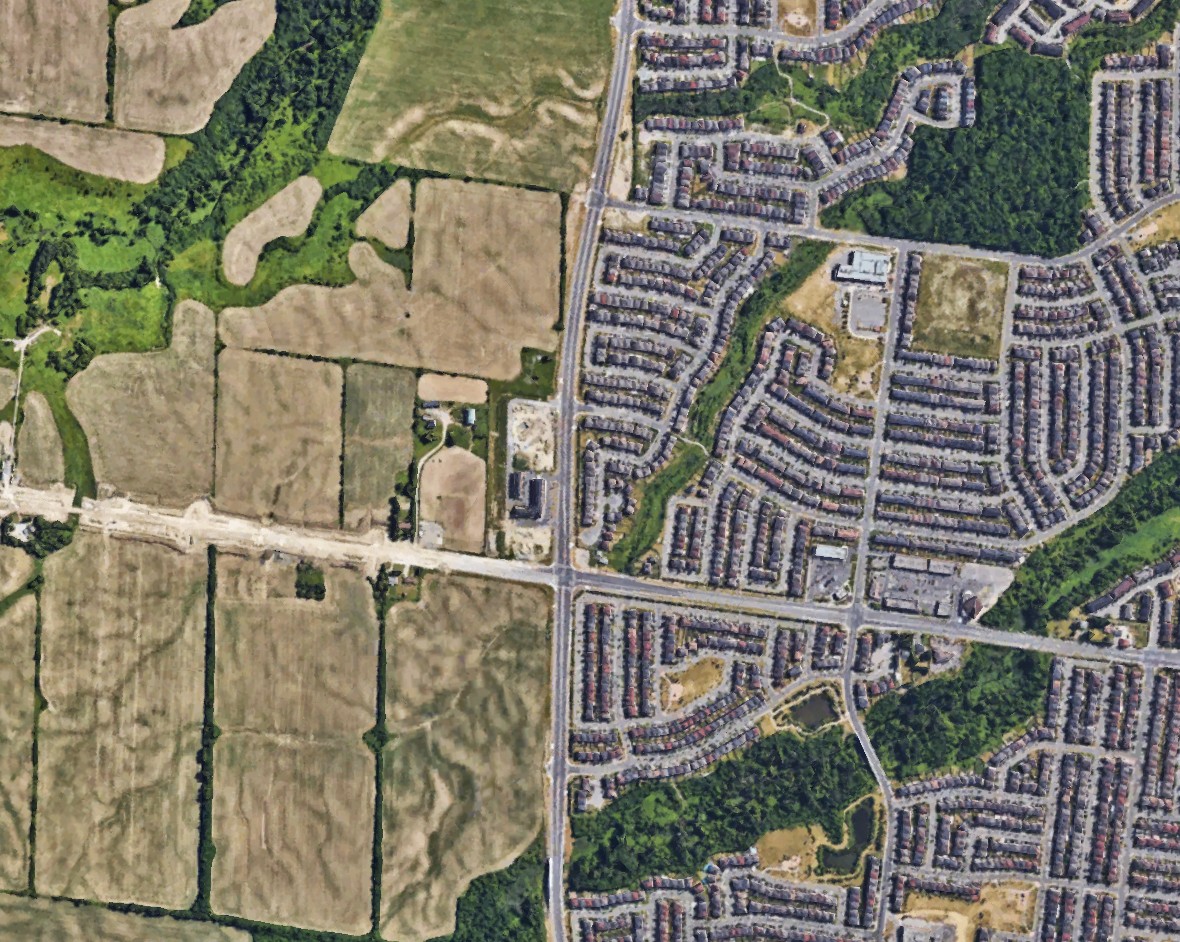
Hundreds of thousands of people will move into Peel by 2040; the Region and province don’t agree on how to plan for the onslaught
Sparring has begun between Peel Region and the provincial government over proposed changes to Ontario’s Places to Grow plan, a set of anti-sprawl rules first introduced in 2005 and since revised, that govern how and where municipalities are to grow over the next 20 years and beyond.
The discussions are jargon-filled and complex, dealing with matters that run deep into corners of the legislation where few ordinary citizens dare to tread. However, final decisions will have a significant impact for residents of Peel, who will see existing communities either become denser, with more varied forms of housing and mass transit, or, particularly in rural areas such as parts of Caledon, see fields and open space become carpeted with sprawling subdivisions.
Well thought-out decisions would create communities supplied with the amenities, resources and infrastructure required to support and provide a high quality of life for a large population. Poor growth planning, on the other hand, results in the choking gridlock that plagues many GTA highways, makes efficient transit hard to achieve, contributes to pollution and climate change, pushes up infrastructure costs, and diminishes the quality of life in many ways.
The next time you’re stuck in traffic, remember that it isn’t simply a result of bad timing; it’s the result of poor planning decisions. With Peel experiencing immense growth, making the right decisions about where those new jobs and homes go in the future is critical.
Peel will need to accommodate a projected 500,000 new residents and 250,000 new jobs by 2041. The expansion underway in Brampton (the second fastest-growing city in Canada) will soon reach Caledon as well.
The province, through Places to Grow, has been encouraging municipalities for years to emphasize intensification (building more densely and upwardly) within their current built boundary — a figurative line separating the built-up areas and those designated for future development. The previous Liberal government proposed changes to the growth plan in 2016 that focused heavily on reducing sprawl and intensifying developed areas. They proposed a mandated target of containing 60 percent of all new development within the existing built boundary in each municipality, and a goal of designing future development to accommodate at least 80 people and jobs per hectare. That marked a significant jump from the previous target of 50 people and jobs per hectare.
The new targets were a shock to some municipalities, worried that subdivision plans that relied on the previous targets would need to be scrapped and redone, at a cost of millions of dollars and hours of lost staff time.
Despite the shock, the recommendation has been found completely doable for municipalities, particularly in Peel Region, according to a report released last fall by the Ryerson University City Building Institute. It found that using infill construction in existing neighbourhoods made it quite possible to increase housing density sufficiently to meet the higher target.
Finding the Missing Middle in the GTHA recommends cities focus on infilling existing neighbourhoods with suitable (low- and medium-density) multi-unit residential developments. Creating this middle ground, and shifting away from the polarizing “tall and sprawl” approach that has dominated GTA planning in recent decades, would shape more opportunities for housing and better affordability, the report said. Creating more of this middle-ground housing could allow more people to work close to home and help them get out out of their cars onto public transit more often — which becomes more realistic when commutes are shorter.

Using five main criteria to select locations — major planned developments, areas around GO stations, existing community nodes, transit corridors and vacant lands — the study was able to find space in Mississauga alone to add about 174,000 new residential units in low- and medium-density housing projects. That’s enough to accommodate about 435,000 new residents.
However, when the Liberal government was ousted from Queen’s Park in the June provincial election, the PCs scrapped the new density targets and began their own review of the plan, known as the Growth Plan for the Greater Golden Horseshoe.
The new proposal from the province, released in January, will reduce the target for greenfield (land awaiting development) density from the previous Liberal goal of 80 people and jobs per hectare to just 60.
That reduction is being supported by regional staff, who claim the change will “continue to provide compact complete communities, while recognizing that higher order rapid transit is not like to be available in most of the newly added greenfield areas by the planning horizon of 2041.”
Herein lies one of the region’s biggest challenges when it comes to developing the edges of Caledon. Previous haphazard planning has left many of the town’s scattered subdivision communities crammed with traffic and has placed immense pressure on infrastructure. The issue affects the rest of the region, as most people who purchase homes in these areas commute to other parts of Peel or Toronto to work. With poor access to public transit, these people are forced to drive, contributing to gridlock and environmental degradation.
Caledon Councillor Jennifer Innis described the process as “planning by numbers,” and it hasn’t worked, she says. “There is a need to pull it back,” she says of the density targets. “We want to build complete communities.”
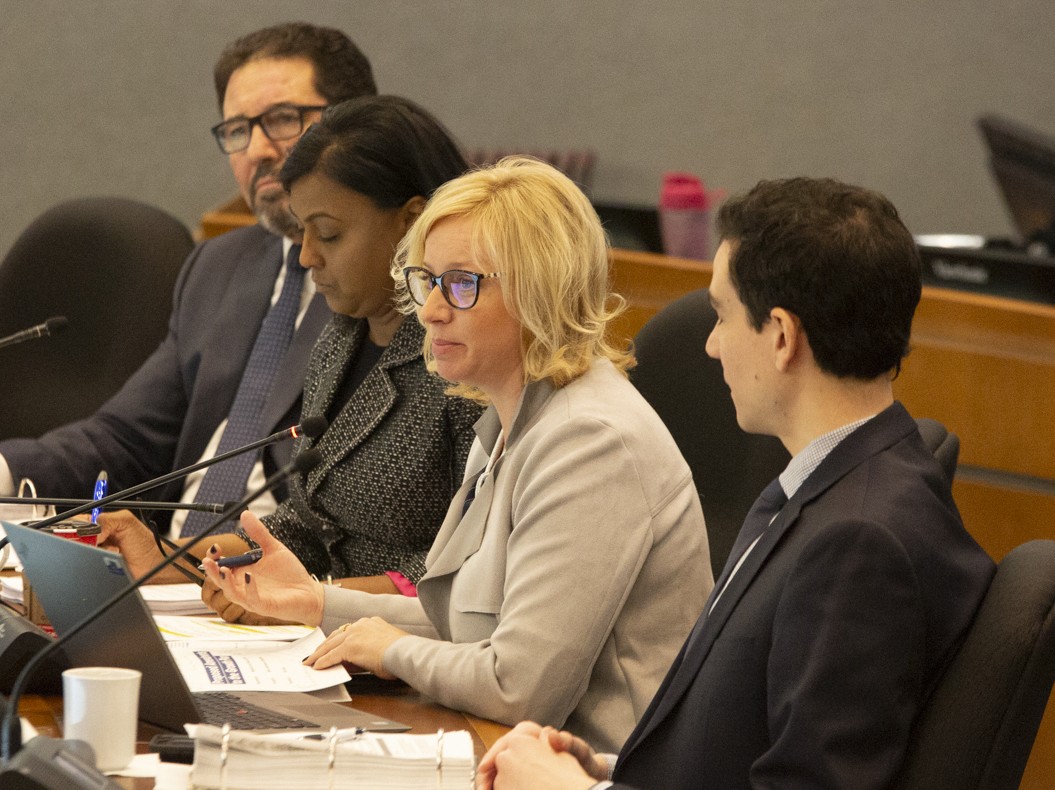
Caledon Councillor Jennifer Innis
Caledon Mayor Allan Thompson agrees; he has described moving ahead with previous density and intensification targets as “insanity.” The current infrastructure doesn’t properly serve “what we’re trying to do to meet those targets,” he told fellow councillors.
The topic of Caledon’s development has been particularly volatile in the Peel council chambers. A few years ago, Brampton and Mississauga got fed up with covering the lion’s share of legal costs for Caledon, which found itself repeatedly before the Ontario Municipal Board (now the Local Planning Appeals Tribunal) after approving controversial planning directions that were routinely challenged at the OMB by private entities. In 2012 a planner working for the Town of Caledon, Haiqing Xu, told the local councillors that their planning decisions were so out of line with provincial and regional policies that their strategy would be difficult to defend at the OMB.
A Ryerson University report that looked into the municipality’s planning decisions concurred, stating the town’s haphazard approach to growth, approving subdivisions in the middle of nowhere, made little sense.
The issue culminated in 2015, when Mississauga and Brampton regional councillors attempted to take over planning decisions for the rural town and its collection of hamlets. A motion was brought forward at the regional table, but it never went through as all Caledon councillors stood up and stormed out of the council chamber, scuttling the vote.
Prior to that dramatic departure at the June 2015 meeting, Regional Councillor Carolyn Parrish questioned if Thompson’s stance in support of a particular development in an area serviced by little infrastructure was tied to his sale of family land in the area to a developer for $9.4 million.
Thompson fired back at her, reminding Parrish that her comments were on the record, shortly before he got up and led the walk-out. Councillor George Carlson said during the meeting, “It looks like Caledon doesn’t want to become a big urban city.”
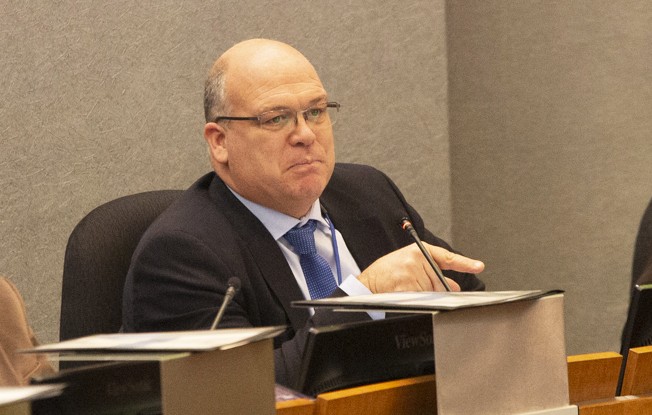
Mayor of Caledon Allan Thompson
Council members from Mississauga and Brampton said they were tired of explaining to their taxpayers that excessive costs for regional infrastructure in Caledon had to be subsidized by the two larger cities because of the much smaller community’s inexplicable planning, which has routinely forced very expensive infrastructure and services out to farflung places where Caledon has approved development, often in and around agricultural land with little existing development around it.
Eventually, the costs became so burdensome to the two cities with 95 percent of the region’s population, and taxpayers, that the province was brought in to mediate the disagreement, which resulted in Caledon effectively losing control over much of its own planning near the end of 2015, as a solution was reached forcing the town to plan its future growth in accordance with provincially mandated guidelines.
The incident highlighted the divide between municipalities focused on practical realities and concerns about development happening in a way not sustainable for future generations.
“We need to stop the warring in Caledon, and if we can look at this logically … everybody wins,” said consultant Don Given, speaking to councillors last week on the proposed growth plan changes.
Council appeared to find a middle ground on the issue, with general support for a motion to ask the province to consider a reduction to the intensification target from 60 percent of new development with the built boundary to 50 percent — the argument being that reducing the target allows intensification to be spread more evenly across the region. With a 60 percent target, many areas in Brampton and Mississauga, along with Caledon, would see intensification.
Innis says the 50 percent target allows for more balanced development.
“Communities that I represent in my ward, Caledon East, they don’t want intensification, but because of your savvy planning they have the infrastructure to actually be able to take more intensification than they’re currently permitted. They don’t want it,” she says, describing the reduction as a compromise among the Peel municipalities. “The community doesn’t want any more growth than they’re already experiencing. They don’t want the infill. It’s built on hills, on sandy slopes, it’s in the Oak Ridges Moraine, there’s all kinds of issues with it, but based on the targets that staff are presenting to us, those areas will be prime for intensification.”
While residents may fear intensification, evidence points to higher-density housing, over sprawling subdivisions, as the path forward for sustainable cities.
In a report that screams for action, the Intergovernmental Panel on Climate Change (IPCC) reported last year that the devastating impacts of climate change are much closer to becoming a reality than previously predicted. Drought, sea-level rise, food shortages, disease spread — many of these were expected to become irreversible problems once Earth’s temperature had warmed 2 degrees Celsius above pre-industrial levels, something not expected to happen in many people’s lifetimes. However, scientists now predict those effects could happen when the climate has warmed by only 1.5 degrees, a threshold that may be reached by 2040.
One area the IPCC report targets as a potentially large mitigating factor is more compact urban growth.
“The urban and infrastructure system transition consistent with limiting global warming to 1.5°C with no or limited overshoot would imply, for example, changes in land and urban planning practices, as well as deeper emissions reductions,” the IPCC report says. “A wide range of adaptation options are available to reduce the risks to natural and managed ecosystems … and urban areas (e.g. green infrastructure, sustainable land use and planning, and sustainable water management).
The IPCC points to municipalities as leaders in all this, noting, “Urban governance is critical to ensuring that the necessary urban transitions deliver economic growth and equity. The proximity of local governments to citizens and their needs can make them powerful agents of climate action, but urban governance is enhanced when it involves multiple actors, supportive national governments, and sub-national climate networks.”
It is within these jargon-filled planning documents that ways can be found to reduce the impact on climate change, as well as improve traffic congestion and other urban issues. However, the provincial government has not been making it easy for municipalities to implement seamless plans.
Along with proposed changes to the intensification and density targets, the PCs have also proposed to amend how these planning documents are designed and amended. This isn’t a surprise; planning documents are typically slated for review every five to 10 years. The problem is that Peel Region is in the midst of reviewing its own plans, and changes proposed by the province throw a wrench into years of planning set to be implemented in the near future.
Peel’s Growth Management Strategy is a blueprint for managing several important factors in the growth. Integrated planning, development, infrastructure, financial discipline and working with municipalities and other stakeholders all fall within the purview of this comprehensive strategy.
It’s a big change from the previous approach, where planning decisions were made in a more “siloed and sequential way,” according to the regional report.
Previously, the province would release mandated growth forecasts for each municipality, which basically allotted a certain number of added residents each municipality would be expected to absorb by a certain year, numbers that would determine how much development/intensification would be required.
These forecasts would then be allocated by the regional government across the municipalities. Following that, a capital plan to deal with the water, wastewater and transportation infrastructure to accommodate this growth was developed, along with a development charge bylaw in order to recoup some of the costs from developers.
Regional council took this process a step further in 2013. Instead of simply making these decisions itself, Peel began working more closely with the municipalities, allocating growth to certain areas while analyzing what infrastructure would be needed to support it.
“There continues to be many benefits of this integrated (approach), including cross-disciplinary implementation and monitoring of growth, earlier and more frequent engagements with the development industry, and a debt deferral of $740 million,” the regional report says.
The political landscape hasn’t made this easy. A slew of changes to provincial growth plans have been trickling down to municipalities between 2014 and this January.
“(This) has made it challenging to implement both work plans in a predictable and timely manner,” the report says.
Continued delays will force the region to miss deadlines established in the strategies, which could mean the region’s economy suffers under slower growth than projected. That’s led the region to press the province to allow for a staged approach to the changes.
Let’s unpack this request.
Planning documents that guide the region’s growth, under the Planning Act, must be reviewed every five or ten years. This process is currently underway through Peel 2041.
Initially, the plan was to introduce the updated regional official plan through staged amendments, so as to not unleash a torrent of changes at once. However, those plans were interrupted when the former Liberal government introduced the Municipal Comprehensive Review (MCR) process in 2017.
“It required that the upper-tier municipality lead a MCR and that official plans be updated using a single amendment approach,” the regional report says. An MCR is the jargon term for the process a municipality must follow to make changes to previously approved plans. Simply put, these reviews changed the game.
In the past, before making amendments to these official planning documents, municipalities needed to review a wide variety of areas to ensure the development fit with the existing community, including effects on transportation, housing priorities, age-friendly planning, health, agriculture, climate change, and existing planning documents like the Greenbelt Plan. An extensive task, but previously one that could be undertaken in stages, allowing various portions of the development plan to move forward while another began its review.
The MCR process requires what is called a “single amendment approach” where all of these things are reviewed at once, and the final plan gets approved by the province before shovels can hit the ground.
“The single amendment approach would prevent important local municipal priorities from moving forward,” the region states in its comments to the province, adding that it could delay development plans into 2021.
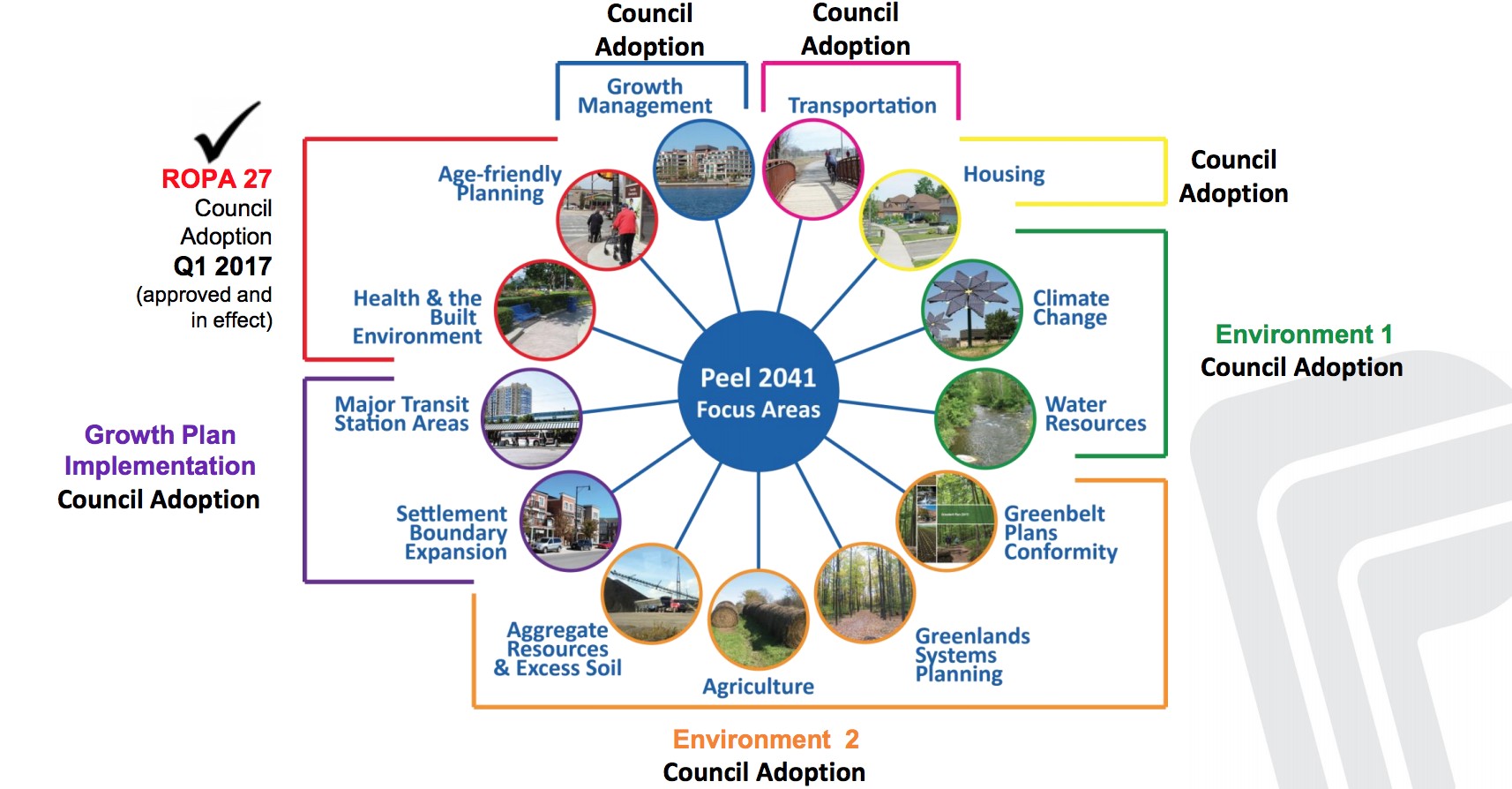
The current official plan amendment process to update Peel's 2041 growth plan involves different aspects of the work being completed in phases.
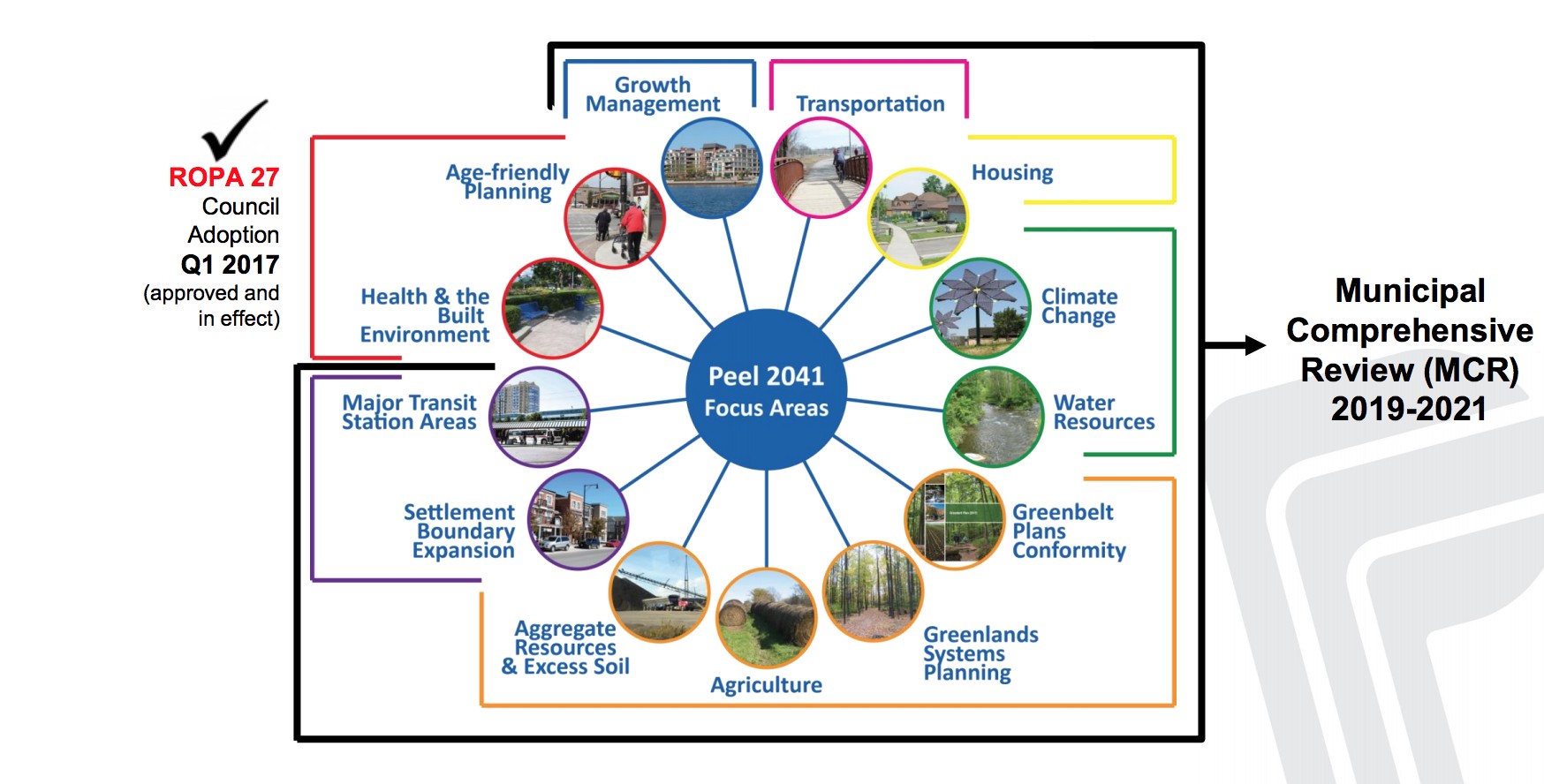
Under the Municipal Comprehensive Review (MCR) process, all of these aspects would need to be completed at the same time before any work can move ahead.
The region has been working from a phased approach in the initial stages of reviewing Peel 2041 and, in the face of what the province has proposed, will continue to do so.
“We still plan to move forward with our technical work so we are in a position to react quickly when the process is finalized by the province,” said Steve Jacques, the region’s director of planning and growth management.
While the provincial proposal could throw a wrench into the work of the region, that impact can trickle even further down to the local level. With delays in the region being able to implement growth forecasts and approvals for Brampton, Caledon and Mississauga, this means that plans established at those levels may also be forced to hit the pause button as regional decisions are made about how and where growth will happen.
“The staged manner would allow local municipal priorities, such as the City of Brampton’s 2040 Vision, the Town of Caledon’s Official Plan Review, and the City of Mississauga’s strategic city building initiatives to advance,” the report says.
The province closed its consultation on the proposed growth changes at the end of February. It’s not clear when the final decisions will be made, but it is sure to have sweeping implications for Brampton and Peel’s future.
Email: [email protected]
Twitter: @JoeljWittnebel
Submit a correction about this story


